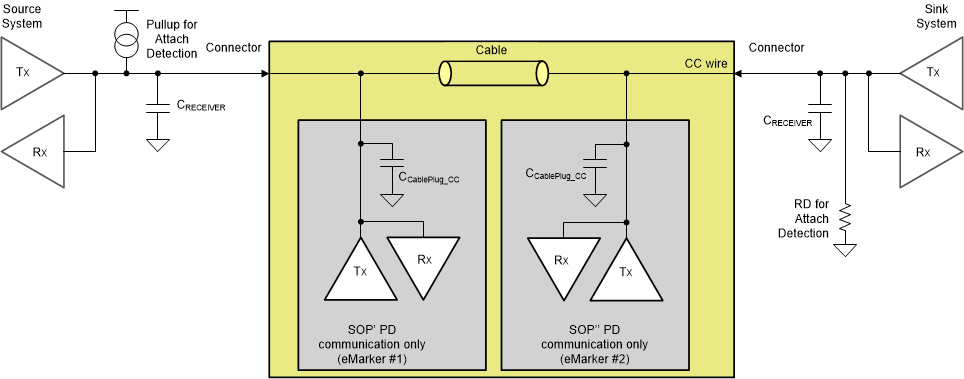SBVS426B December 2022 – October 2024 TPS25772-Q1
PRODUCTION DATA
- 1
- 1 Features
- 2 Applications
- 3 Description
- 4 Device Comparison Table
- 5 Pin Configuration and Functions
-
6 Specifications
- 6.1 Absolute Maximum Ratings
- 6.2 ESD Ratings
- 6.3 Recommended Operating Conditions
- 6.4 Recommended Components
- 6.5 Thermal Information
- 6.6 Buck-Boost Regulator
- 6.7 CC Cable Detection Parameters
- 6.8 CC VCONN Parameters
- 6.9 CC PHY Parameters
- 6.10 Thermal Shutdown Characteristics
- 6.11 Oscillator Characteristics
- 6.12 ADC Characteristics
- 6.13 TVSP Parameters
- 6.14 Input/Output (I/O) Characteristics
- 6.15 BC1.2 Characteristics
- 6.16 I2C Requirements and Characteristics
- 6.17 Typical Characteristics
- 7 Parameter Measurement Information
-
8 Detailed Description
- 8.1 Overview
- 8.2 Functional Block Diagram
- 8.3
Feature Description
- 8.3.1 Device Power Management and Supervisory Circuitry
- 8.3.2 TVSP Device Configuration and ESD Protection
- 8.3.3
Buck-Boost Regulator
- 8.3.3.1 Buck-Boost Regulator Operation
- 8.3.3.2 Switching Frequency, Frequency Dither, Phase-Shift and Synchronization
- 8.3.3.3 VIN Supply and VIN Over-Voltage Protection
- 8.3.3.4 Feedback Paths and Error Amplifiers
- 8.3.3.5 Transconductors and Compensation
- 8.3.3.6 Output Voltage DAC, Soft-Start and Cable Droop Compensation
- 8.3.3.7 VBUS Overvoltage Protection
- 8.3.3.8 VBUS Undervoltage Protection
- 8.3.3.9 Current Sense Resistor (RSNS) and Current Limit Operation
- 8.3.3.10 Buck-Boost Peak Current Limits
- 8.3.4 USB-PD Physical Layer
- 8.3.5 VCONN
- 8.3.6 Cable Plug and Orientation Detection
- 8.3.7 ADC
- 8.3.8 BC 1.2, Legacy and Fast Charging Modes (Px_DP, Px_DM)
- 8.3.9 USB2.0 Low-Speed Endpoint
- 8.3.10 Digital Interfaces
- 8.3.11 I2C Interface
- 8.3.12 Digital Core
- 8.3.13 NTC Input
- 8.3.14 Thermal Sensors and Thermal Shutdown
- 8.4 Device Functional Modes
- 9 Application and Implementation
- 10Device and Documentation Support
- 11Revision History
- 12Mechanical, Packaging, and Orderable Information
Package Options
Refer to the PDF data sheet for device specific package drawings
Mechanical Data (Package|Pins)
- RQL|29
Thermal pad, mechanical data (Package|Pins)
Orderable Information
8.3.4.5 USB-PD BMC Receiver
The receiver block of the TPS25772-Q1 receives a signal that falls within the allowed Rx masks defined in the USB PD specification. The receive thresholds and hysteresis come from this mask.
Figure 8-25 shows an example of a multi-drop USB-PD connection (only the CC wire). This connection has the typical Sink (device) to Source (host) connection, but also includes cable USB-PD Tx/Rx blocks. Only one system can be transmitting at a time. All other systems are Hi-Z (ZBMCRX). The USB-PD Specification also specifies the capacitance that can exist on the wire as well as a typical DC bias setting circuit for attach detection.
 Figure 8-25 Example USB-PD Multi-Drop Configuration
Figure 8-25 Example USB-PD Multi-Drop Configuration